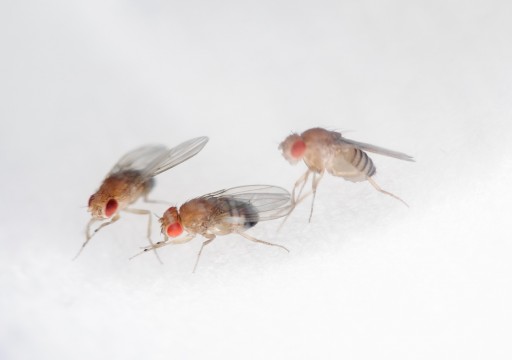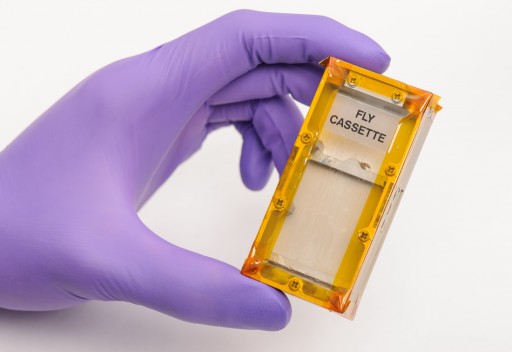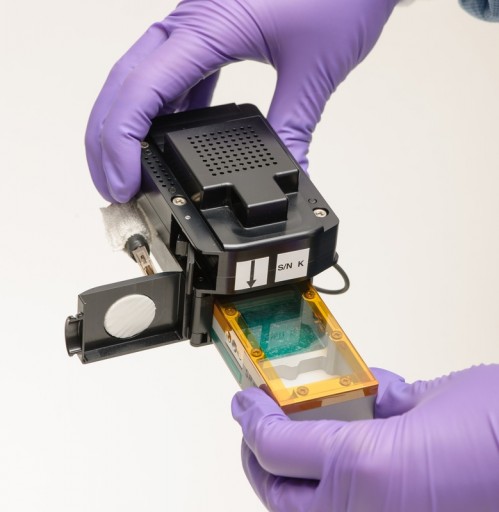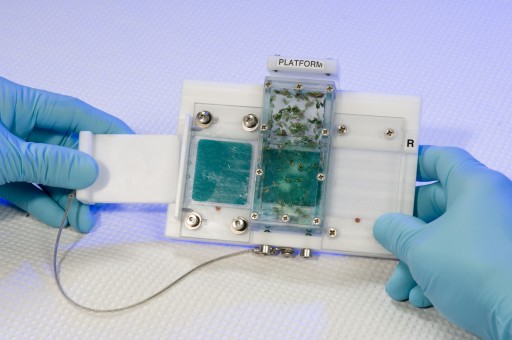Fruit Fly Lab-01


Fruit Fly Lab-01 is the most advanced research facility ever deployed to space for long-duration studies of fruit flies in the space environment. Experiments involving the fruit fly can allow scientists to determine how microgravity and other aspects of the space environment affects these insects, delivering valuable information for long-term human space flight with special focus on illnesses since about 77% of human disease genes have a close matches in the fruit fly genome.
Fruit flies (Drosophila Melanogaster) are ideally suited for the study of the effects of microgravity on biological processes given their short life span that allows studies of the whole biological system from birth, growth, reproduction and aging over multiple generations.
The FFL-01 experiment looks at the innate immune system which could make humans more susceptible to disease if affected by the space environment. Another factor is that microbes can become hardier and more virulent in the spaceflight environment. The experiment studies the combined effect of altered host immunity and exposure to microbes in the space environment.
Previous studies looked at host immunity and microbe virulence separately while FFL-01 will combine the two to identify the potential consequences of spaceflight. Learning about the molecular biological changes within the combined system allows for a deeper mechanistic understanding, but also helps in the development of countermeasures for future space projects.


The experiment uses Fly Cassettes to ferry the insects to ISS where the cassettes are inserted into their experiment facilities – some are kept under the influence of microgravity while others are installed in the NanoRacks Astrium centrifuge in NanoRacks Platform 3 where they will be subjected to an artificial gravity. This will allow researches to distinguish the effects of weightlessness from other spaceflight factors such as radiation. The experiment facility includes lighting fixtures that operate on a realistic day/night cycle and a series of video cameras are used to record the behavior of the insects which is used as an indicator of the health of the flies.
The Fly Cassette consists of an aluminum body with a slot that can facilitate the food tray that is inserted into the cassette. The lid of the cassette is made of transparent polycarbonate plastic to allow for monitoring of activity of the flies. Ventilation is provided through small holes in the side panels of the cassette, covered in a stainless steel mesh.
The Observation and Lighting Unit includes the video camera and LED lights that create an artificial daylight cycle and delivers video of the insects. There is one Observation and Lighting Unit per Fly Cassette. Infrared LEDs are used to monitor the flies during night cycles.
Overall, a total of 12 cassettes can be part of one experiment run – six installed in the centrifuge and six exposed to microgravity.
To deliver nutrients to the insects, a Food Changeout Platform has been developed, consisting of Delrin and Lexan to facilitate the transfer of food trays from one cassette to the other while avoiding the release of any contaminants. Using a T-bar, crew members can insert a fresh tray into the Fly Cassette while simultaneously pushing out the spent tray that can be placed in a protective bag.
The removed food tray contains eggs, embryos and larvae that will be transferred to an empty Fly Cassette to either grow the next generation of flies or preserve the samples by freezing.
Starting out with about 100 flies, FFL-01 will go through three or four generations of flies over its four-week mission duration. Samples will be returned in the form of live flies as well as preserved specimens for analysis on the ground to identify changes in insects exposed to microgravity, to artificial gravity and to the normal Earth environment in a control test.
